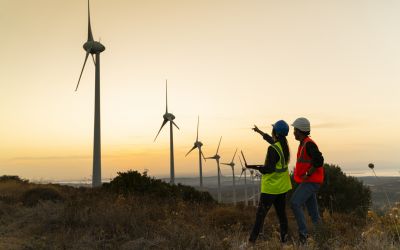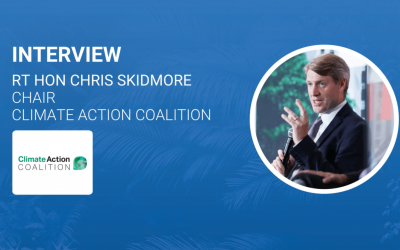Laina Draeger interviews Hyewon Kong on how the investment community can help reach net zero targets
Ahead of the Sustainable Investment Forum Europe 2022, Laina Draeger of Los Angeles Capital sat down with the Firm’s client IMCO, and its Head of Responsible Investing Hyewon Kong who discussed how the investment community can be most effective in accelerating the low carbon transition.

Ahead of the Sustainable Investment Forum Europe 2022, Laina Draeger of Los Angeles Capital sat down with the Firm’s client IMCO, and its Head of Responsible Investing Hyewon Kong who discussed how the investment community can be most effective in accelerating the low carbon transition.
This past November IMCO joined the Paris Aligned Investment Initiative to formally commit to Net Zero. What does this mean for your organization going forward? How does this impact your portfolio construction and manager selection process?
2021 was an important year for IMCO on climate change. Our focus shifted from “Why” to “How” we can play a role in moving toward a Net Zero economy. Recognizing that Net Zero is imperative if the targets of the Paris Agreement are to be achieved, IMCO developed a climate strategy and action plan and made the transition to Net Zero a top strategic priority and corporate objective.
Our commitment to Net Zero has resulted in us embedding our action plan principles right across the organization, from the board down to each of the investment deal teams. We strengthened our organizational oversight and now every investment is reviewed by our investment committees to ensure there is alignment with our climate strategy and our commitments to Net Zero.
We have set clear expectations that our portfolio companies and external managers are also aligned with our objectives. We changed our proxy voting guidelines to explicitly state our expectation for companies to commit to a Net Zero target by 2050, set science-based interim targets and disclose in line with the Task Force on Climate-Related Financial Disclosures (TCFD).
For every manager selection, we conduct ESG due diligence across all asset classes. Our ESG due diligence questionnaire includes a comprehensive climate section to evaluate managers’ Net Zero alignment, climate risk and opportunities, carbon footprinting of Scope 1 and 2, and if appropriate, Scope 3 emissions targets and metrics, and TCFD reporting.
From a practical application standpoint, what are the initial steps you are undertaking to act on this commitment?
Build an organizational mindset and buy-in toward Net Zero.
The most important first step that we took is to build an organizational mindset and buy-in toward Net Zero because our multiyear journey on climate requires awareness, upskilling and changes across our organization. We started working on both top-down and bottom-up engagement to build Net Zero considerations as strategic priorities and part of our investment process. Our CEO and CIO took ownership of setting the Net Zero targets and developing a climate action plan, which are incorporated into IMCO’s corporate objectives and their performance objectives. We continually engage and consult with our board, senior leaders, and key stakeholders for their input on taking action, and for building a common shared understanding on our Net Zero goals throughout the organization.
Develop our climate strategy and action plan.
Our climate strategy is focused on four pillars, namely: capital deployment, asset ownership, portfolio management and climate guardrails.
- Capital Deployment – We started an asset class Net Zero deep dive starting with our infrastructure investment team to identify sectors and funds that support the transition to Net Zero, and what tools and resources are required to assess climate positive investment opportunities.
- Asset Ownership - We are engaged with our portfolio companies and external managers and collaborate on climate initiatives such as Climate Action 100+, Climate Engagement Canada, Paris Aligned Investment Initiative and Partnership for Carbon Accounting Financials.
- Portfolio Management - We conduct scenario analysis on our portfolio and are establishing our portfolio and operational emissions baseline.
- Climate Guardrails - We mitigate climate risk in our portfolio through climate guardrails, which will limit our exposure to investments that are incompatible with a Net Zero future.
What do you see as the biggest challenge going forward as you work towards Paris alignment?
We are facing many challenges right now, but I would say that one of the biggest is the lack of consistent, comparable, standardised climate data across all asset classes to support our informed investment decision making towards Paris alignment. There is a total lack of reported emissions data in the private market. Scope 3 emissions data are scarce and inconsistent.
We are finally seeing momentum for global efforts to address this issue by setting global standards like PCAF, but its methodology still does not cover important asset classes (e.g., government debt) and security types (e.g., ETFs). And there is still no clear methodology for evaluating Net Zero alignment and there are too many different decarbonization glidepaths and scenarios.
What are some of the tools you are using to assess portfolio risks and opportunities related to climate, and to ensure alignment with a Net Zero pathway?
We are utilising the Paris Aligned Investment Initiative’s Net Zero Investment Framework and the Investor Agenda’s framework for Investor Climate Action Plan to support our journey to Net Zero. We are using MSCI climate analytical data to assess our portfolio risks and opportunities, scenario analysis and Paris alignment, and Persefoni platform to measure our portfolio’s Scope 1, 2 and 3 GHG emissions across all asset classes where PCAF provides guidance.
How can the investment community be most effective in accelerating the low carbon transition?
The investment community can build a Net Zero investment ecosystem by collaborating to accelerate the transition to Net Zero. We can make a positive change by making sure our external managers take decisions in line with Net Zero, and our managers can make a positive change by working with their investees on Net Zero transition. By exercising our shareholders rights, we can drive climate action from companies. By engaging with policymakers and regulators, we can support Net Zero aligned policy and regulation.






